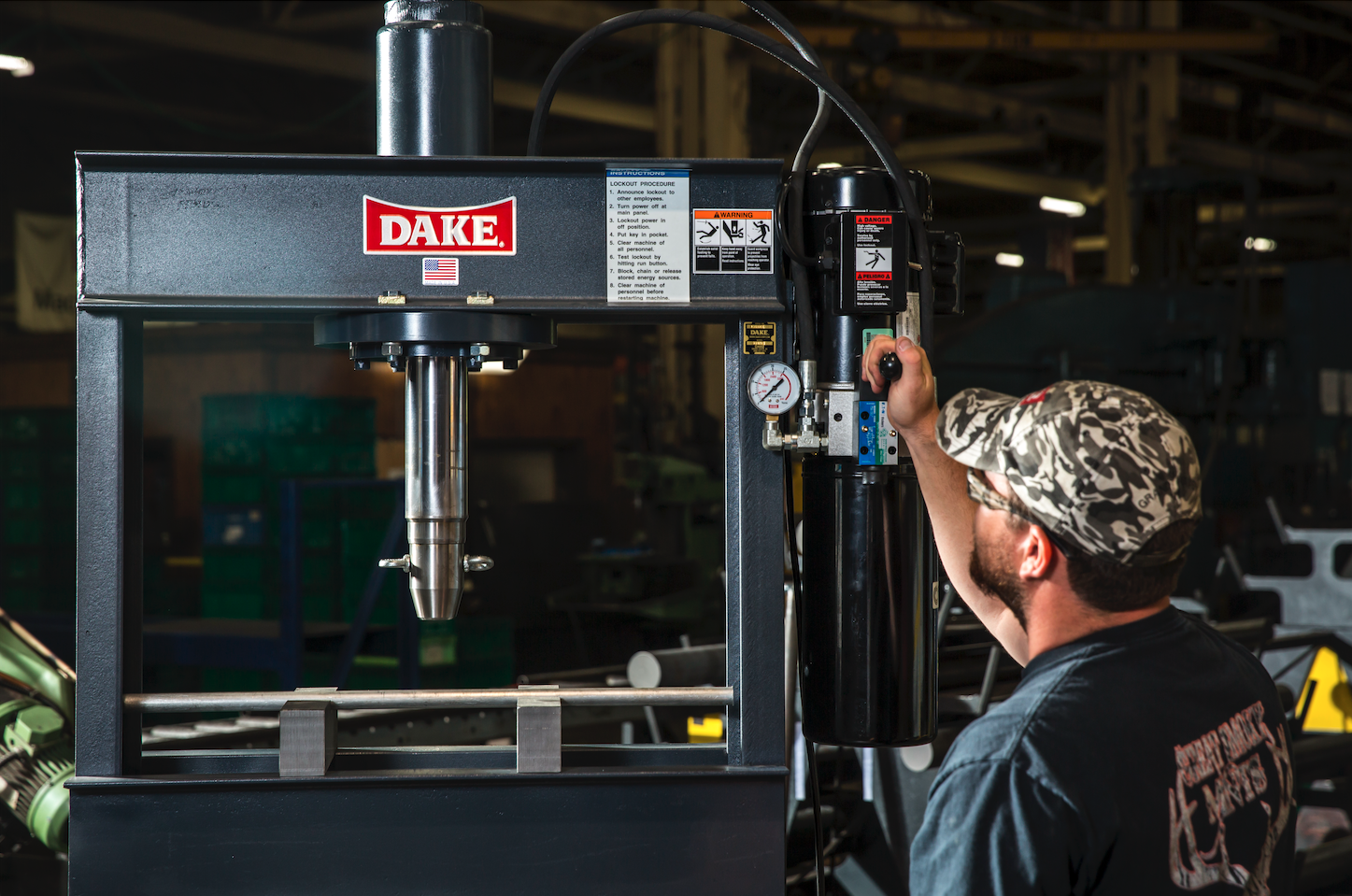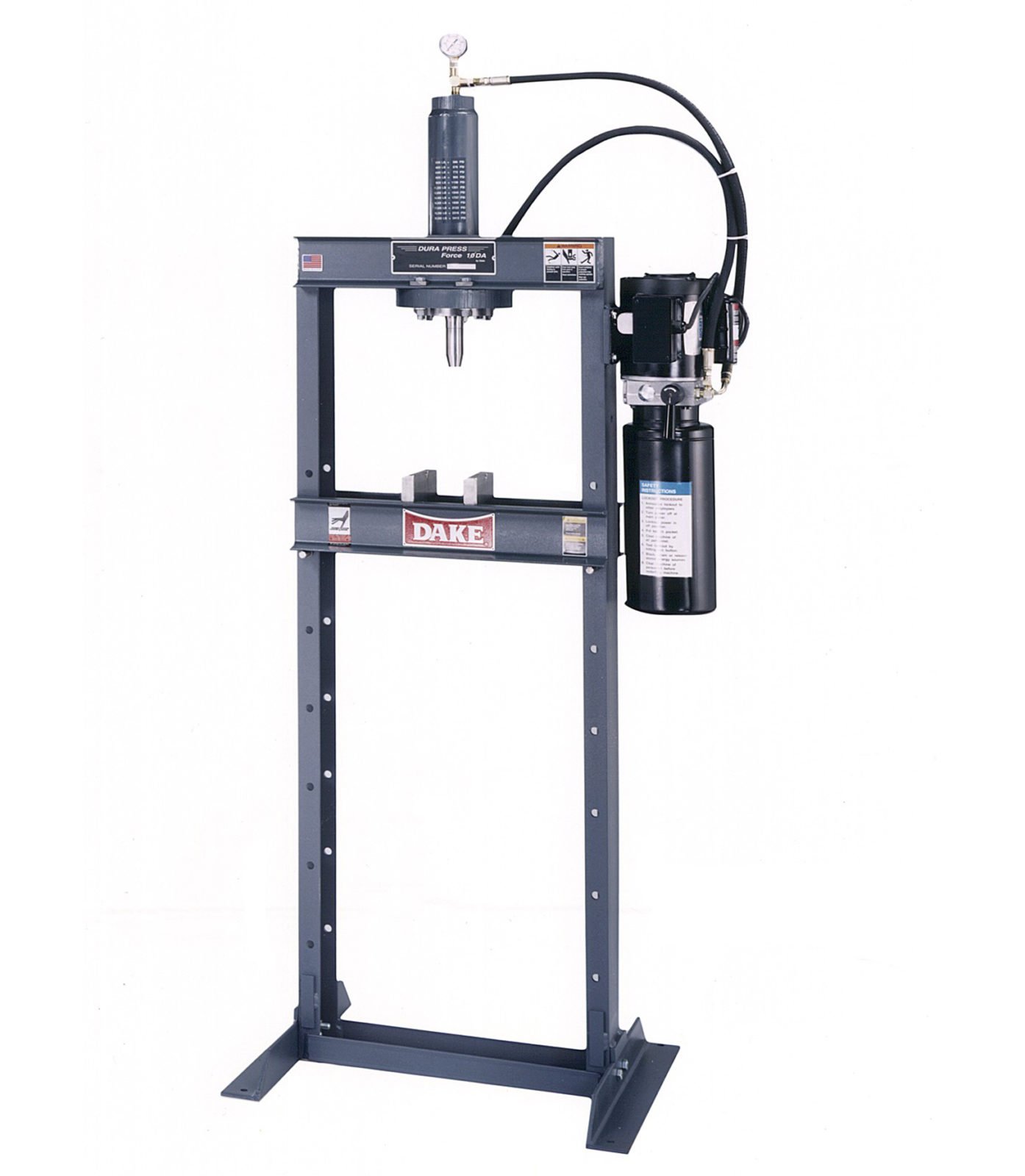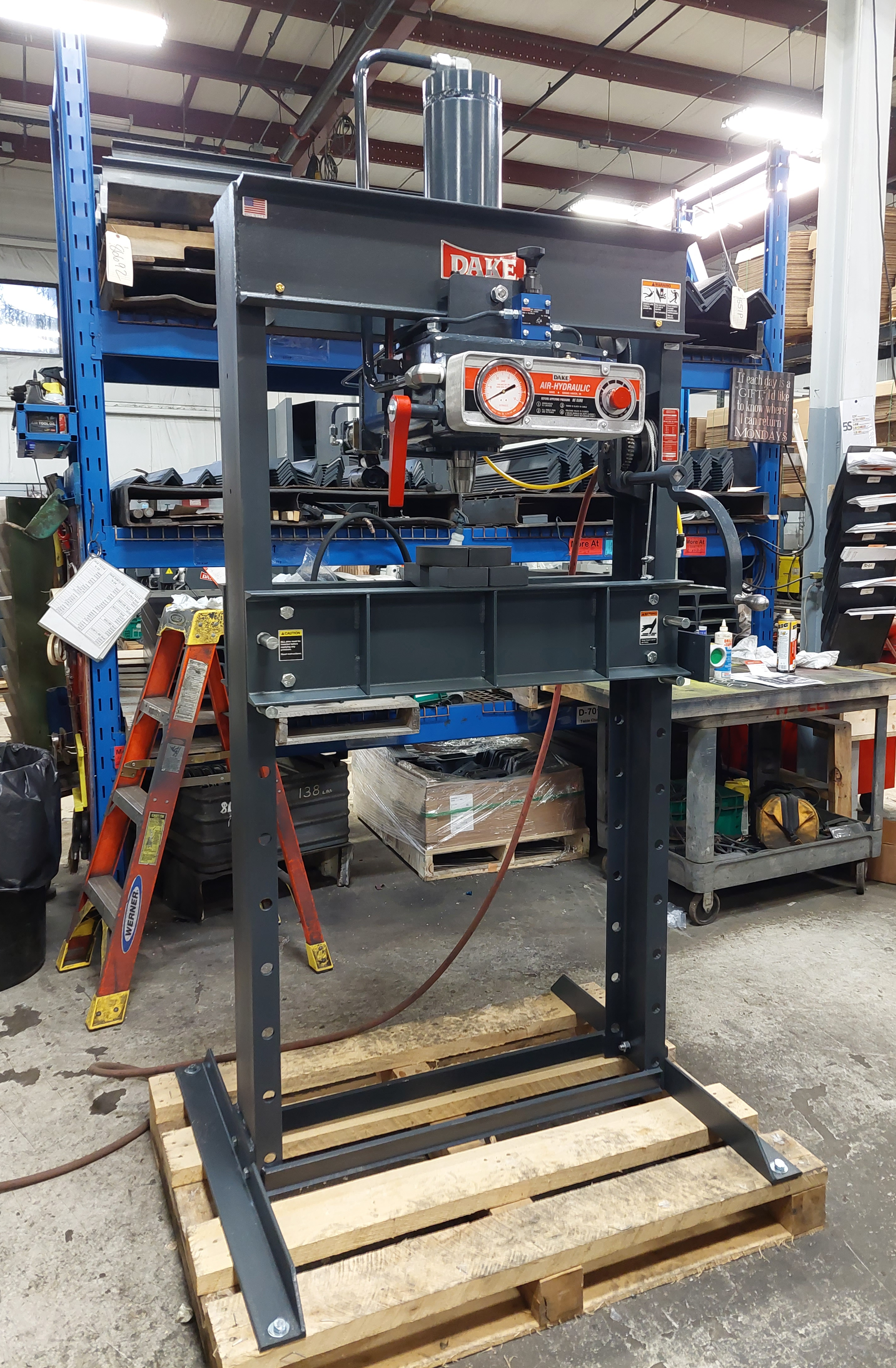Alright, today we’re talking affordable, versatile, and well-appointed hydraulic presses. It got me thinking back to 11th grade shop class when you got your first car. Perhaps it was a Plymouth Valiant or a VW Bug – whatever it was, there were four items you were required to have: a Spark-O-Matic stereo, gas money, insurance, and tools to keep the old bucket-of-bolts running. If only Dake had a small 10- and 20-ton utility press back then, I could have spent more time behind the wheel instead of under it.
Today I still see 11th grade homemade press projects being used that were made from scrap steel (who knows what kind of pressure the steel can withstand), a cross member, a bottle jack and two return springs that look like they came off your kid’s rocking horse. Some of them are homemade and yes, some are commercially made. It’s a scary piece of equipment to say the least. Can you imagine one of the springs failing and suddenly flying back at you? You can’t outrun it. What if you apply pressure to the press and the frame flexes and cracks? Dake frames are engineered to handle the load. Bottle jacks are great when used as a bottle jack not as a work head.
Most of us don’t want or need a press that eats all your garage’s floorspace. One of the cool features of the Dake 10-ton and 20-ton presses are their small footprint. I own a 10-ton bench model, which does what I need it to without taking up much real estate. Do I use it every day? No, but when I need it, it’s a life saver. U-joints or bending metal on these little presses are the ticket. And they come with table plates, a stepped nose piece, a traversing head, and a gauge.
So, if you want a real press that is feature-packed for a little more than spare change, follow this link for all the features and specs. We have three models, so take a look to see which model is the right one for you.
-1.jpg?width=1200&height=525&name=DAKE003_%20Logos_Red%20(002)-1.jpg)

.jpg)

